Insects: Page 2
Hemiptera-true bugs
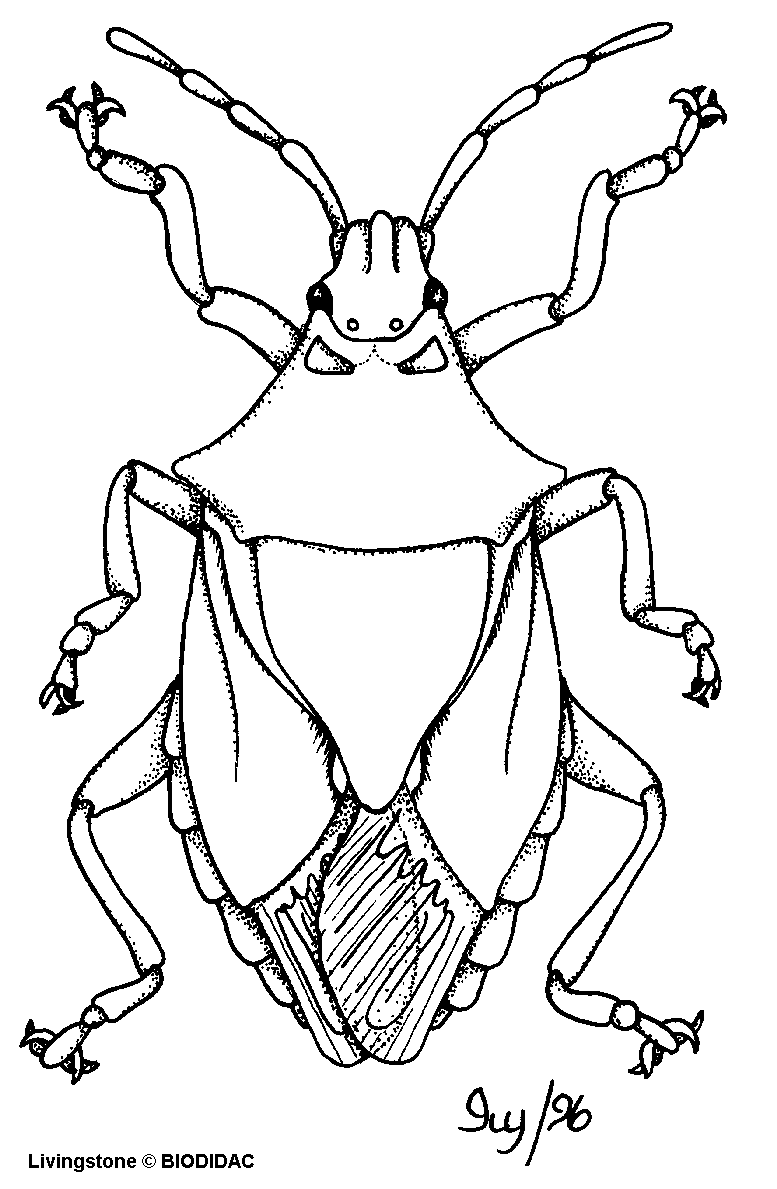
Homoptera- aphids, leafhoppers,
cicadas, etc...
Incomplete metamorphosis
Piercing-sucking mouthparts
mouthparts originate from the lower rear of head
Typically feeding on plant sap
sap high in sugar and water, low in other things insect
needs
needs to process a lot of sap and excrete excess water
and sugar
excreted "honeydew" is important food for some
other insects
some ants tend aphids like herds of dairy cows!
Aphids
small, very common sap feeders
typically parthnogenic when conditions are good (photo of aphid giving birth)
males produced and sexual reproduction in Fall
often tended/protected by ants
Aphids on a plant:
Leafhoppers
slender sap feeders with hopping legs for fast escapes
Also, for more info on leafhoppers, see:Leafhopper
Homepage
Cicadas (see: periodical cicada nymph and adults)
Very large, males "sing" loudly
to attract mates
drum-like membranes under abdomen are vibrated to make
the incredibly loud calls
Nymphs live underground, feeding on sap in tree roots
the common dog day cicadas spend 2 years underground
periodical cicadas spend 17 years (!!!) underground
entire population emerges all at once
enormous densities of adults
for a few weeks
their collective calls are almost deafening!
Diagram of an adult cicda:
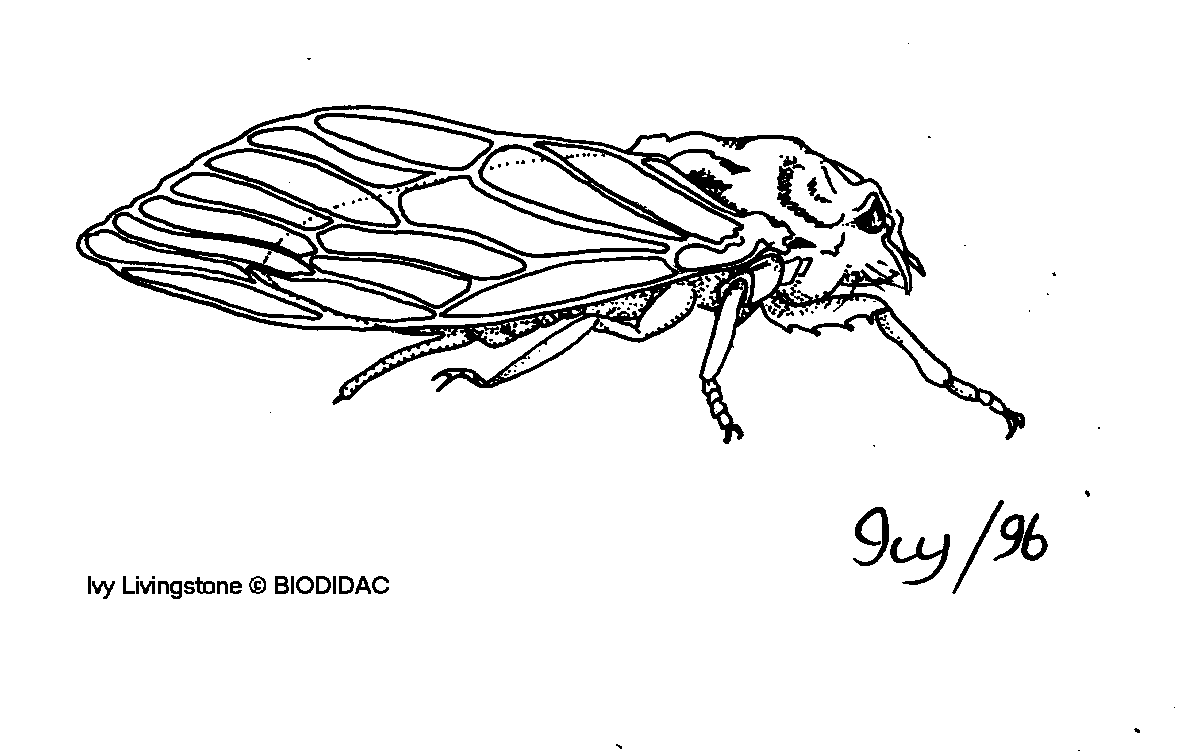
Anoplura-sucking lice
incomplete metamorphosis
feed on blood of a variety of animals
superbly adapted for life on their hosts
some are specialized for feeding on humans, with different
species specialized for different body regions
head lice
body lice
crab lice
a huge pain in the neck to rid yourself of once they
take up residence on you!!!!
eggs (called nits) of head lice are glued to hairs
"nit picking" is laborious process, but one
of best ways of thoroughly getting rid of lice.
human lice are common, and used to be much more common
several common phrases originate from widespread dealings
with lice
"nit picking"
"went over it with a fine-teethed comb"
human body louse (left), and "claw" for gripping
hair (middle), crab louse (right)
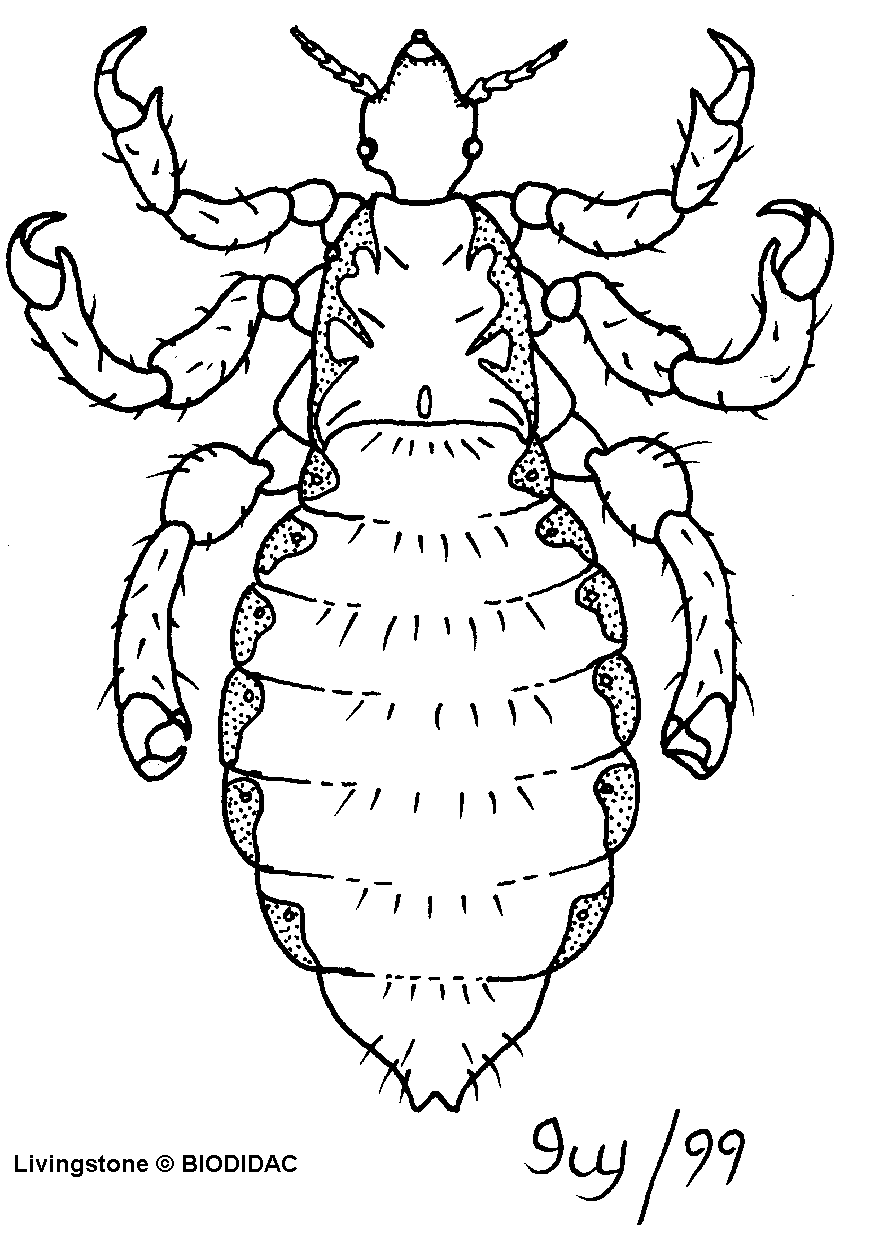
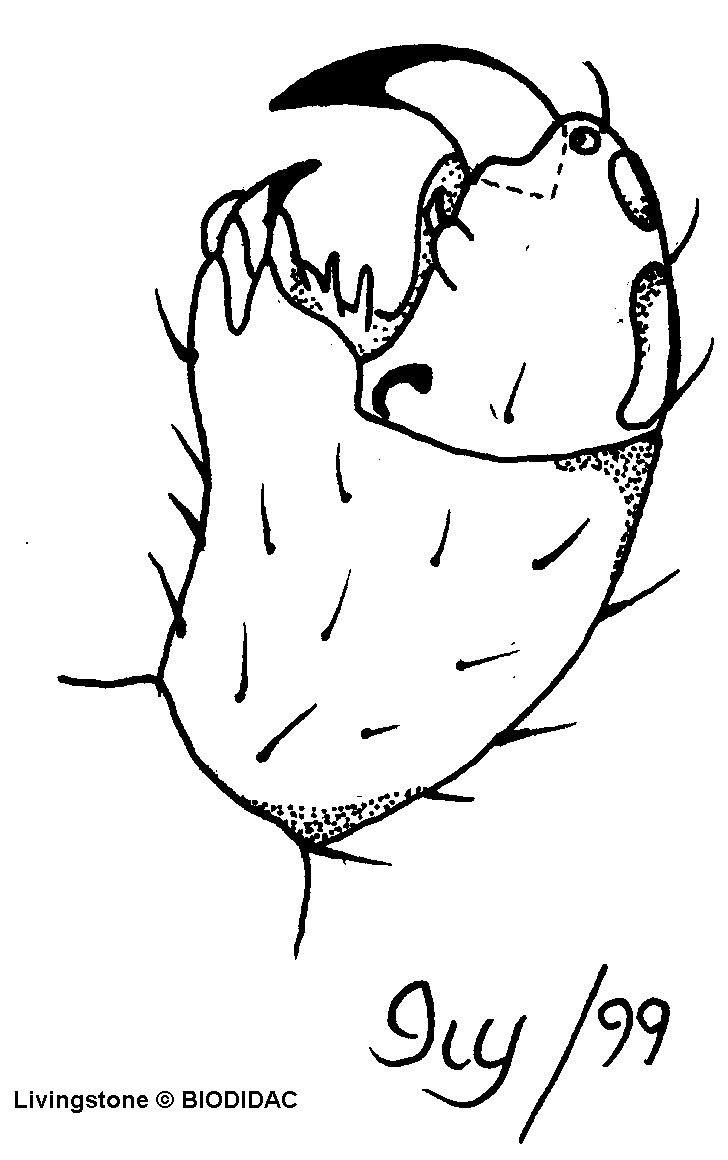
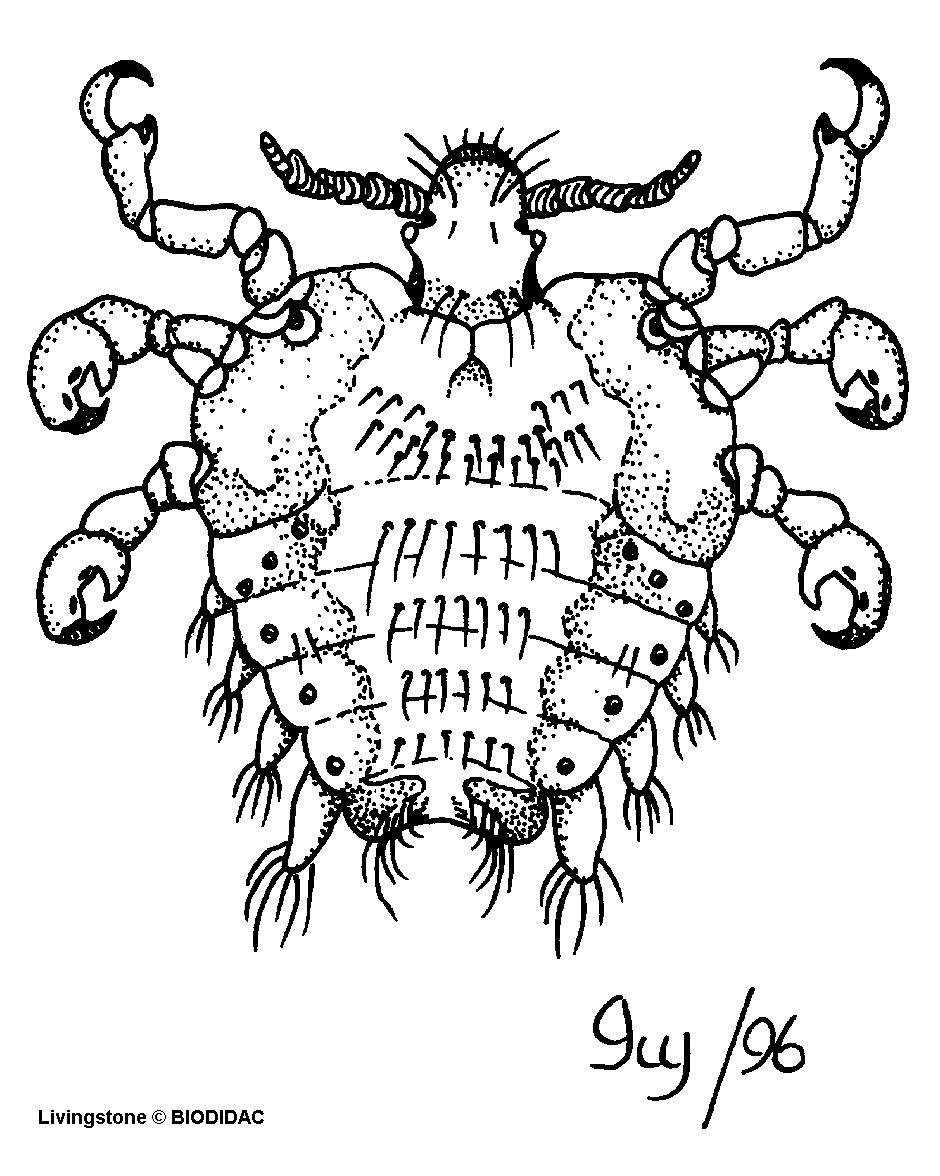
Coleoptera - beetles
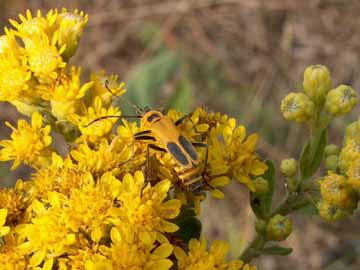
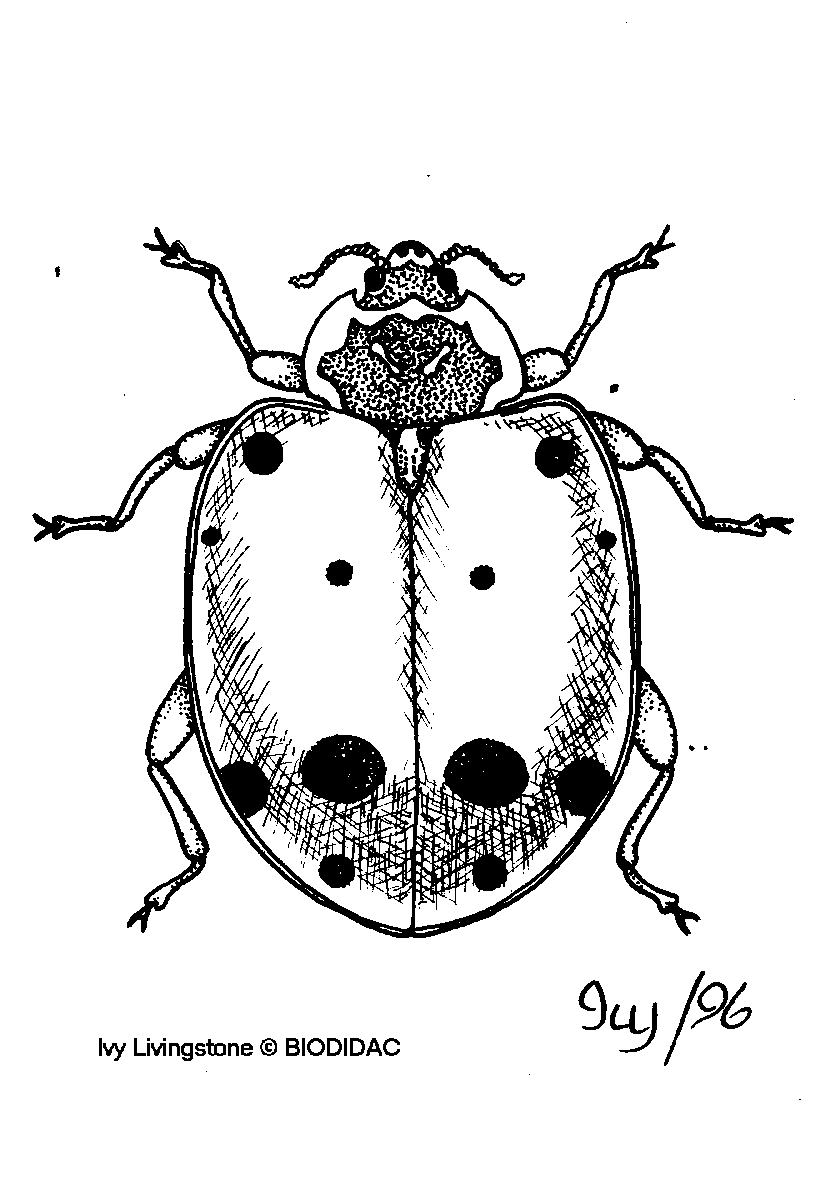
Soldier beetle photo (above left) taken by W. Capman
THE MOST DIVERSE ANIMAL GROUP ON EARTH!
Complete metamorphosis
larvae are typically grubs of some sort - have various
forms:

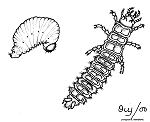
Chewing mouthparts - see mouthparts of a tiger beetle
Diverse food habits/habitats
most are plant feeders
many predators
some parasites (larval stage)
some aquatic
Forewings are leathery or hardened (e.g. "ladybugs"
are beetles)
protect hindwings in resting beetle
Hindwings membranous and used for flight
LOTS AND LOTS OF COOL SPECIES that do strange things,
including:
Bombadier beetle protects itself with spray of hot caustic
liquid
Lightningbugs (fireflies) attract mates using light flashes
from abdomen tip
Lepidoptera-butterflies and moths
Complete metamorphosis
larvae are caterpillars
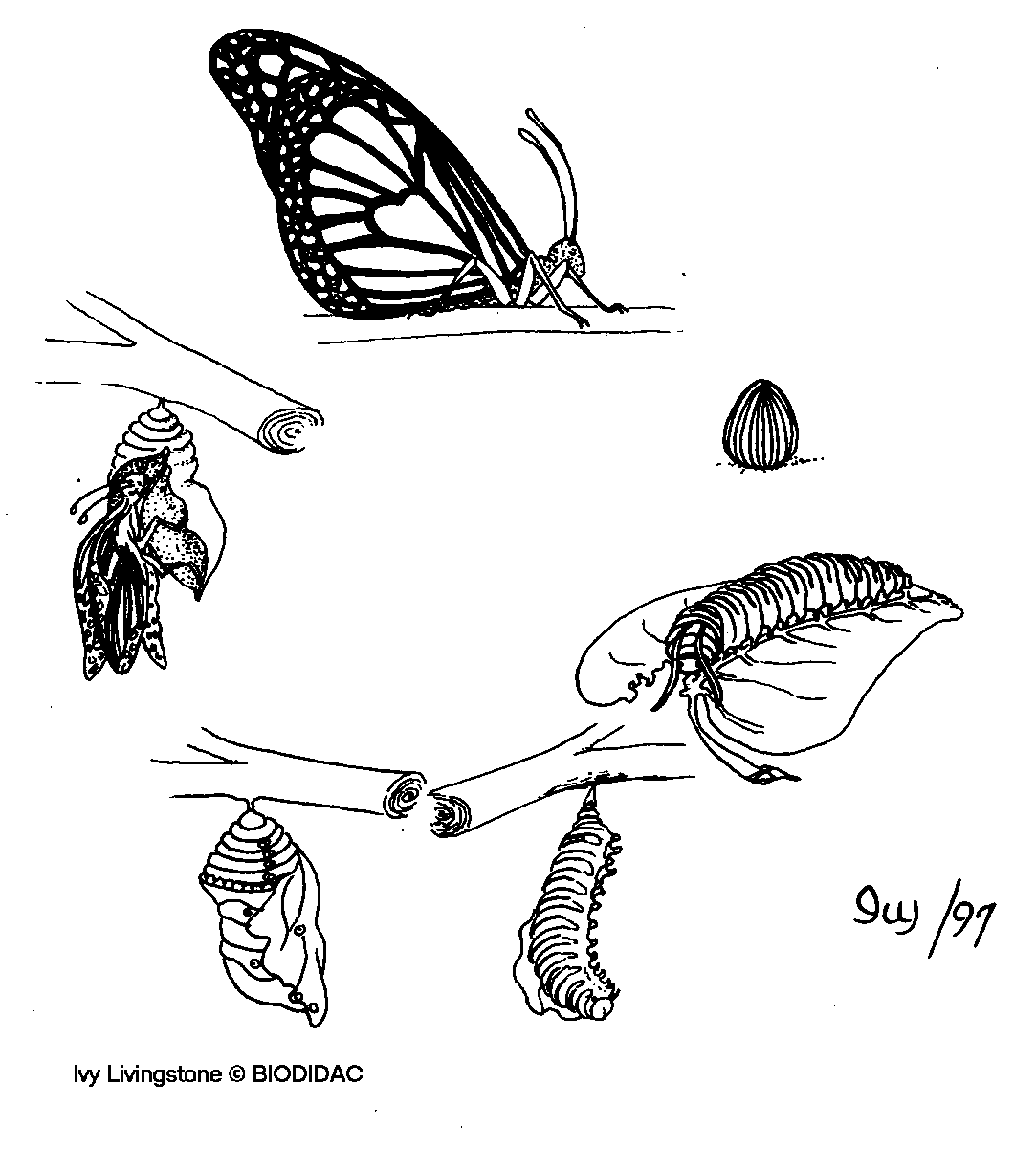
Mouthparts:
larvae - chewing, for plant feeding
adults - sucking, tubular proboscis (coiled when at rest)
for nectar feeding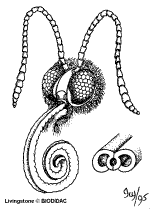
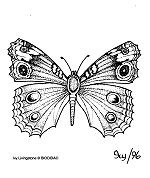 Very large wings
often colorful
wings covered in scales (without scales, wings are transparent)
See this page (and the links on the page) for info on the significance of wing size: http://web.augsburg.edu/~capman/photoofmonth/monarch.html
Butterflies - diurnal (active by day, often only when
sun is shining)
Moths- most species nocturnal (active by night)
Very large wings
often colorful
wings covered in scales (without scales, wings are transparent)
See this page (and the links on the page) for info on the significance of wing size: http://web.augsburg.edu/~capman/photoofmonth/monarch.html
Butterflies - diurnal (active by day, often only when
sun is shining)
Moths- most species nocturnal (active by night)
Diptera-true flies
Very diverse group
Complete metamorphosis
larvae of many species called maggots
mosquito larvae aquatic and not maggot-like (the diagram
below actually shows mosquito larva upside-down):
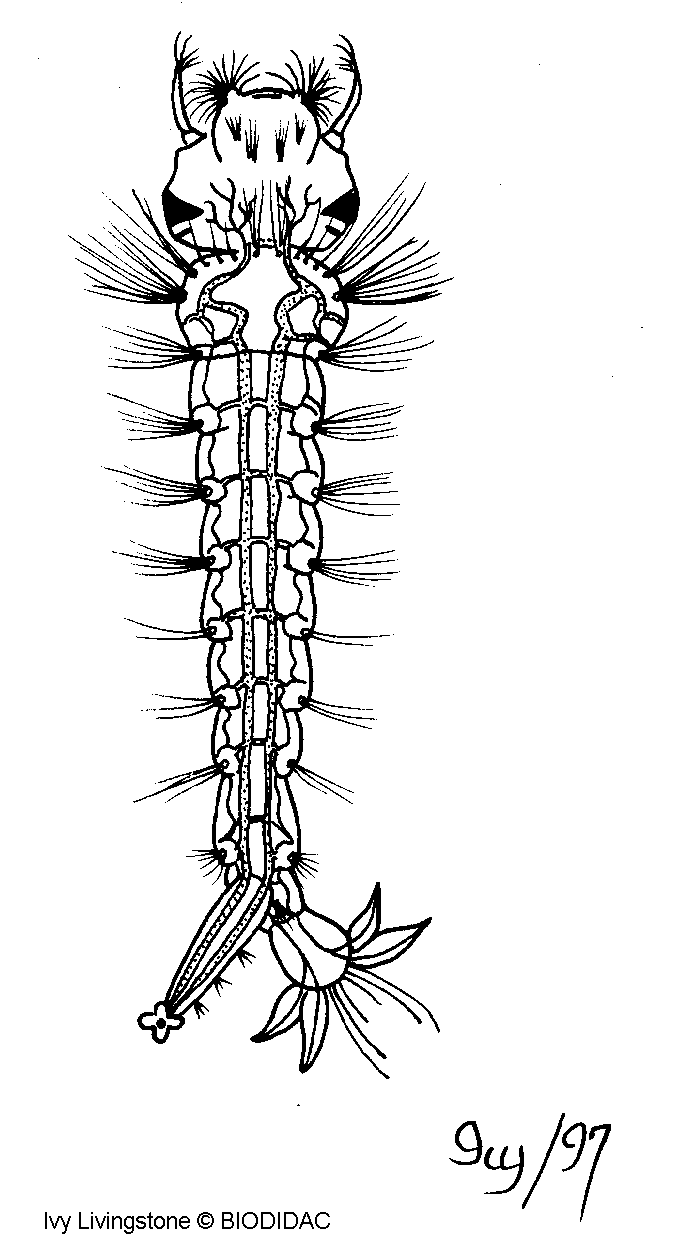
Only one pair of functional wings
Hindwings reduced to club-like halteres
aid in stabilizing flight
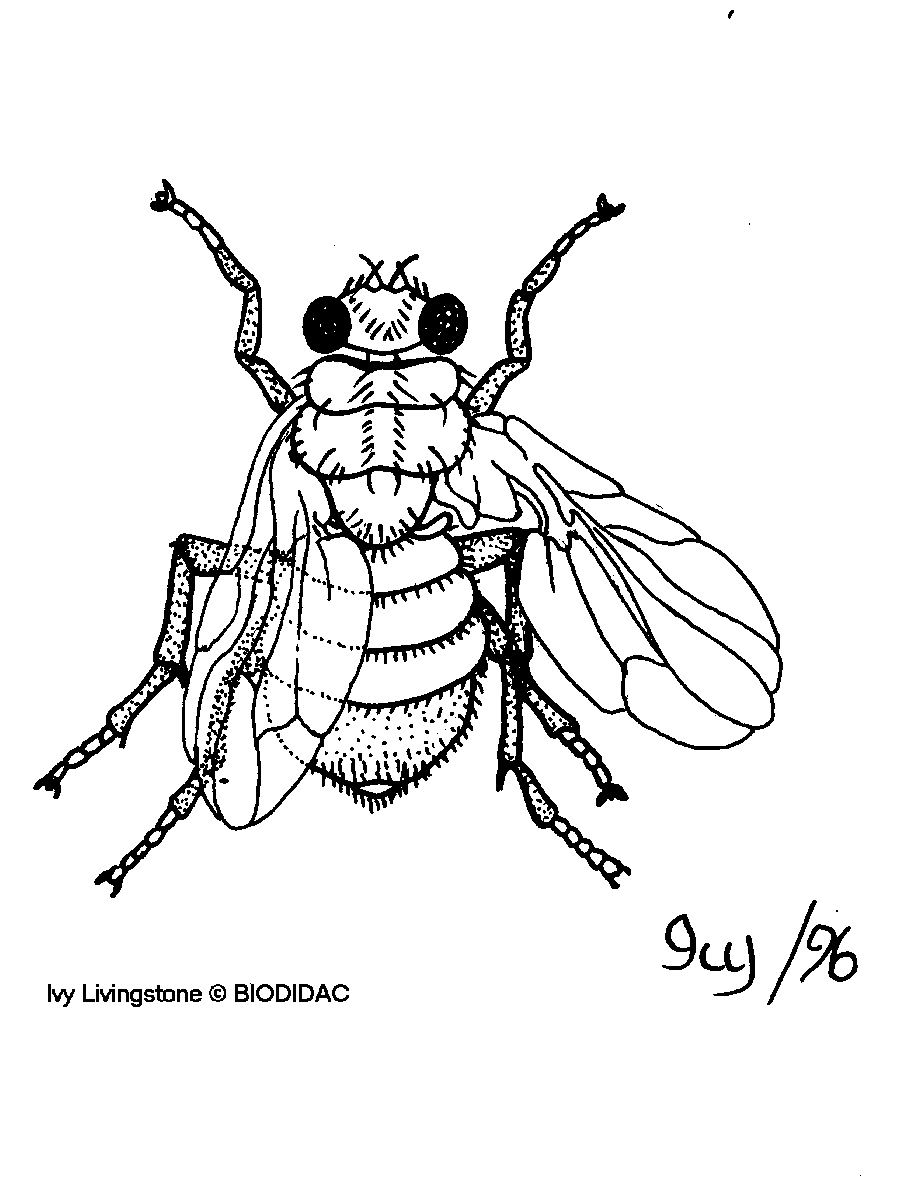
Amazingly agile in the air!
Diverse mouthparts, including
piercing-sucking (e.g. mosquitos, deerflies, horseflies...)
mopping
Lifestyles....
you name it, some fly (or its larval stage) probably
does it!
a really gross example of the strangeness of some flies...bot
flies
Siphonaptera- fleas
Complete metamorphosis
Piercing-sucking moutparts for blood feeding
Laterrally compressed
Hop amazingly well
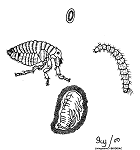
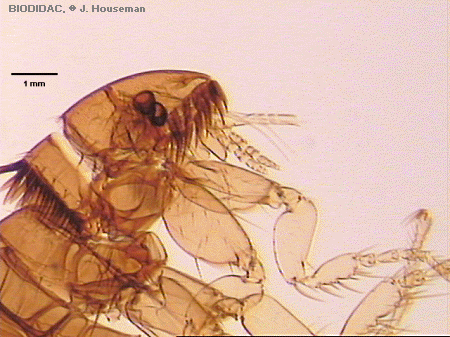
Hymenoptera- ants, bees, wasps, sawflies
Complete metamorphosis
Chewing mouthparts (modified for sucking or lapping up
nectar in some species)
Some of the most behaviorally sophisticated insects
Some species live solitary lives but many species have
special form of sociality called eusociality
One reproductive female (the queen) per colony
Most of colony consists of non-reproductive females called
workers
stingers are modified ovipositors - only females can
sting
Workers care for their mother (the queen) and their younger
sisters (and brothers)
Males and new queens only produced at certain times
new reproductives leave nest all at once
males unable to care for themselves, not allowed back
to colony or fed by workers after they leave to mate.
Fertilized eggs (diploid) develop into females, unfertilized
eggs (haploid) develop into males!!!
Members of some families are parasitoids
parasitic (e.g. on other insects or their eggs) as larvae
free-living as adults
Ants
narrow, constricted "waists" (in contrast,
termites are thick-waisted)
along with termites, these are the most numerically abundant
insects on earth (number of individuals and total biomass, not number of
species), greatly exceeding humans in abundance.
nest in subterranean burrows
feed on lots of things - some are ferocious predators
some (slavemaking ants) raid colonies of other species,
steal larvae, which grow up to be slaves
very complex creatures!
Bees
defining feature is that bees feed their larvae pollen
honey is enyzymatically modified and concentrated (by
evaporation) nectar
carried to hive in tiny loads in bee's stomachs
regurgitated into cells in honeycombs
evaporated by fanning wings
(not all bees make honey)
hairy bodies with "pollen baskets" on certain
legs
honeybees dance to tell other colony members where to
find good nectar and pollen sources
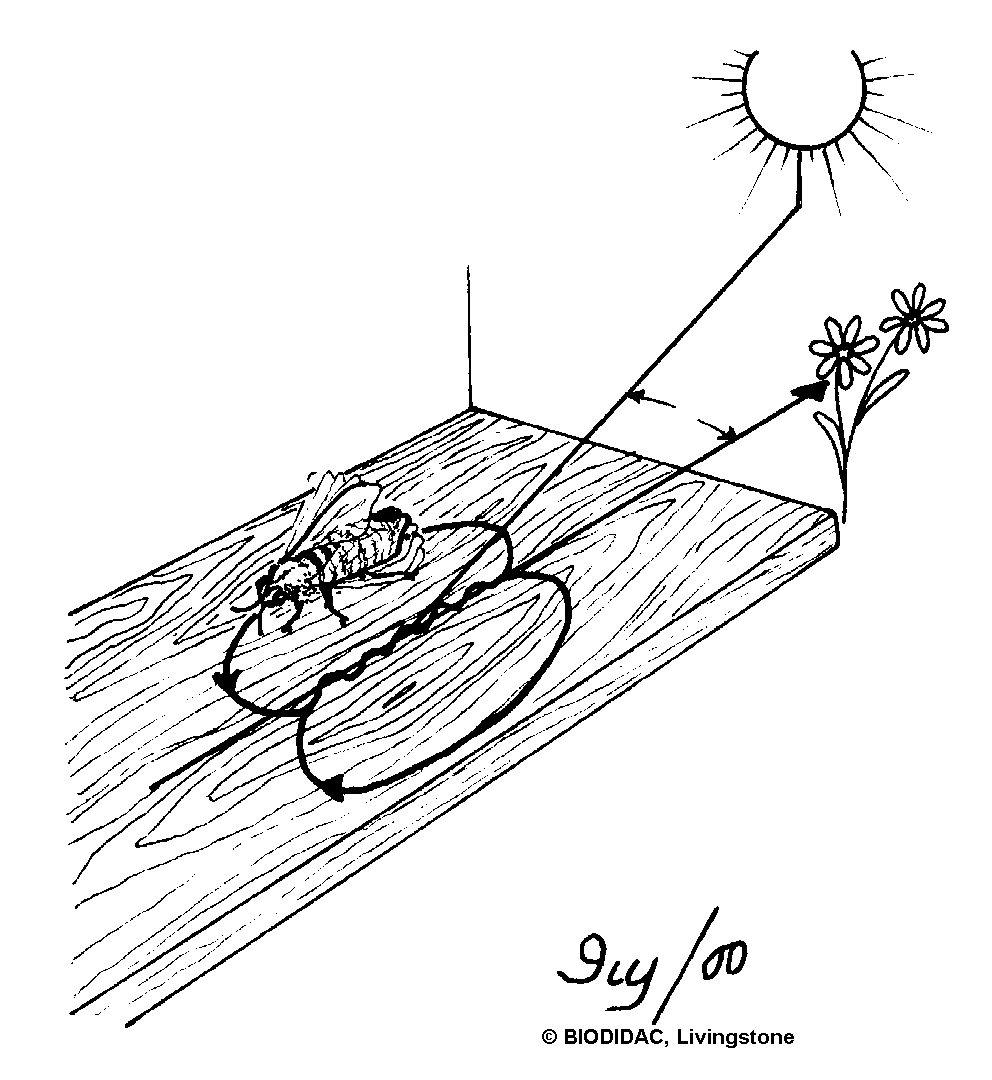
not all species are colonial
Wasps, hornets, etc.
many diverse types
many are predators, and gather caterpillars, etc. to
feed to larvae
many wasp families are parasitoids
empty aphid mummies, previously parasitized by a parasitoid
(probably a small wasp):
Other orders of insects?......
- There are a whole bunch more that we
have no time to cover!!!








